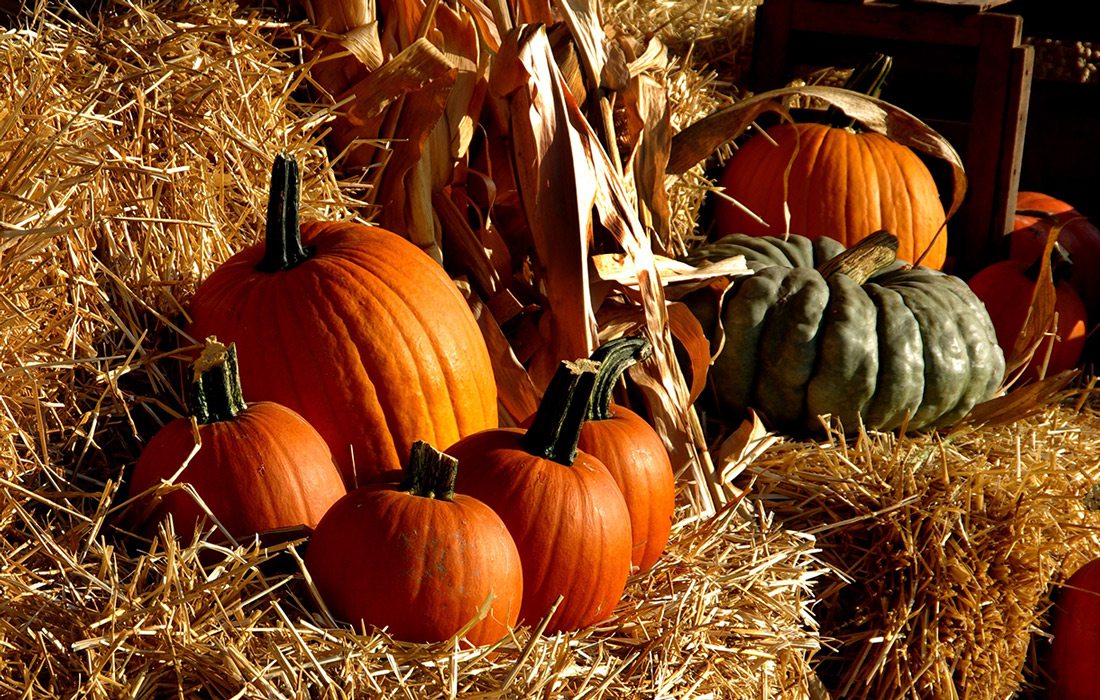
Lifestyle
Discard Your Fall Decorations the Eco-Friendly Way
Our guide to shedding your autumnal adornments—without sending them straight to the landfill.
By Lillian Stone
Oct 2019

Pumpkins, hay bales, towering sunflowers: 417-land is home to some impressive fall porch displays. But what happens when it’s time to ditch your seasonal accoutrement in favor of holiday decorations? What happens to all those pumpkins and corn stalks? We chatted with Springfield Compost Collective Executive Director Justine Campbell to get the scoop on sustainable solutions for gourds, hay bales, black walnuts and more.
Gourds and Pumpkins
Jack-o-Lanterns, while fun and festive, rot notoriously quickly. Even if you’re not one to carve a grin into your gourds, you don’t want to be the neighbor with the rotting pumpkins on their porch come December. Fortunately, pumpkins are fully compostable. “Essentially, anything plant-based is compostable,” Campbell says—although there are a few stipulations. First, Campbell recommends breaking your pumpkin up into four- to six-inch pieces, which will allow it to decompose much faster once added to the composting bin. While the Compost Collective offers several community composting options, hundreds of massive pumpkins tend to overwhelm the system. This year, the collective plans to debut extra bins to remedy the problem. Not keen on composting? You can put your pumpkin to good use. Butterflies love rotting fruit, so cut your pumpkin into slices, freeze it, then leave it in your garden to attract butterflies in the spring.
Hay Bales
Like other forms of organic matter, hay bales are compostable. Don’t chuck your bales into the compost bin just yet. Hay can be a great supplement to help grass seed grow. Hang onto your hay until late spring, then lay your grass seed and loosely top it with about a quarter inch of hay. Keep in mind that one bale will cover 1,000 square feet of seed. Any extra bales can be shredded and placed in the compost bin.
Corn Stalks
Like pumpkins and hay bales, you’ll need to shred your corn stalks into much smaller pieces before placing them in the compost bin. This is especially important if you’ve set up your own composting zone in your backyard. “The pieces have to be able to heat up evenly, so the microorganisms will grow and the material will decay faster,” Campbell says. A properly executed warm compost pile can disintegrate materials in as quickly as four months, although it could take up to eight months depending on the size of the material.
Black Walnuts
Lucky enough to have a walnut tree in your front yard? While black walnut season might be a bit messy, it’s also lucrative for those willing to get their hands dirty. Stockton-based Hammons Products pays $16 per hundred pounds of hulled black walnuts through the months of October and November. Find your nearest buying station at black-walnuts.com, then get to gathering. Just be sure to scrub your hands and nails after handling the walnuts—they can leave a telltale brown stain for days.
Other Autumnal Yard Waste
Looking to rid yourself of miscellaneous seasonal yard waste like leaves or spiky sweet gum tree balls? Organic materials like these can be great additions to your personal compost pile. If you haven’t yet taken the compost plunge, check out Springfield’s Yardwaste Recycling Center (3790 South Farm. Road 119, Brookline) near the Southwest Wastewater Treatment Plant. Springfield and Greene County residents can drop off everything from grass clippings and leaves to shrub trimmings, free of charge. Just make sure to remove your yard waste from any containers like trash bags or boxes, and leave the lumber and dirt at home.












